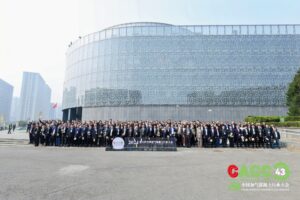— Challenges and risks
The roadmap provides a viable pathway to net zero for AAC manufacturers but does face three principal risks:
1. Success of the cement and lime roadmaps
The roadmap relies on the success of the cement and lime industry roadmaps to decarbonise by 2050. These roadmaps depend on widespread adoption of CCU and CCUS technology which has an uncertain economic model, and on innovation to develop alternative binders which have not yet been proven as viable raw materials for AAC production.
2. Access to renewable energy sources
To remove factory emissions in the production of AAC, EAACA members will require access to renewable electricity
and to hydrogen as fuel sources. Currently, EU and UK hydrogen policy and infrastructure plans are at an early stage and it is unlikely that hydrogen infrastructure will be rolled out at a uniform pace across member countries.
3. Investment costs
Implementing the roadmap will require long-term action and investment by AAC manufacturers. The main cost for EAACA members is the investment required to upgrade the boilers that provide steam to the autoclaves to run on lower carbon
fuel sources. The speed at which this investment occurs will vary between members.
Do you want to become a member of EAACA? Contact us!
News

Highlights of the EAACA Net-Zero Roadmap for the Autoclaved Aerated Concrete Industry
Toward a Climate-Neutral Future: Highlights of the EAACA Net-Zero Roadmap for the Autoclaved Aerated Concrete Industry The European Autoclaved Aerated Concrete Association (EAACA) has

Sustainable and yet affordable – how AAC manages the balancing act
Since its invention about 100 years ago, autoclaved aerated concrete (AAC) has established itself as a preferred building material in the construction industry in terms

43th China Aerated Concrete Conference
During October 6th to 8th, 20024, China Aerated Concrete Association (CACA) organized 43th China Aerated Concrete Conference in the old heritage city Xi’an with the
